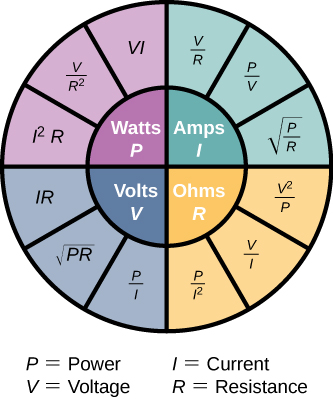| << Chapter < Page | Chapter >> Page > |
The life spans of the three types of bulbs are significantly different. An LED bulb has a life span of 50,000 hours, whereas the CFL has a lifespan of 8000 hours and the incandescent lasts a mere 1200 hours. The LED bulb is the most durable, easily withstanding rough treatment such as jarring and bumping. The incandescent light bulb has little tolerance to the same treatment since the filament and glass can easily break. The CFL bulb is also less durable than the LED bulb because of its glass construction. The amount of heat emitted is 3.4 btu/h for the 8-W LED bulb, 85 btu/h for the 60-W incandescent bulb, and 30 btu/h for the CFL bulb. As mentioned earlier, a major drawback of the CFL bulb is that it contains mercury, a neurotoxin, and must be disposed of as hazardous waste. From these data, it is easy to understand why the LED light bulb is quickly becoming the standard in lighting.
| Light Output
(lumens) |
LED Light Bulbs
(watts) |
Incandescent Light Bulbs
(watts) |
CFL Light Bulbs
(watts) |
|---|---|---|---|
| 450 | 4−5 | 40 | 9−13 |
| 800 | 6−8 | 60 | 13−15 |
| 1100 | 9−13 | 75 | 18−25 |
| 1600 | 16−20 | 100 | 23−30 |
| 2600 | 25−28 | 150 | 30−55 |
In this chapter, we have discussed relationships between voltages, current, resistance, and power. [link] shows a summary of the relationships between these measurable quantities for ohmic devices. (Recall that ohmic devices follow Ohm’s law .) For example, if you need to calculate the power, use the pink section, which shows that , , and .

Which equation you use depends on what values you are given, or you measure. For example if you are given the current and the resistance, use . Although all the possible combinations may seem overwhelming, don’t forget that they all are combinations of just two equations, Ohm’s law and power .
Common household appliances are rated at 110 V, but power companies deliver voltage in the kilovolt range and then step the voltage down using transformers to 110 V to be used in homes. You will learn in later chapters that transformers consist of many turns of wire, which warm up as current flows through them, wasting some of the energy that is given off as heat. This sounds inefficient. Why do the power companies transport electric power using this method?
Although the conductors have a low resistance, the lines from the power company can be kilometers long. Using a high voltage reduces the current that is required to supply the power demand and that reduces line losses.

Notification Switch
Would you like to follow the 'University physics volume 2' conversation and receive update notifications?